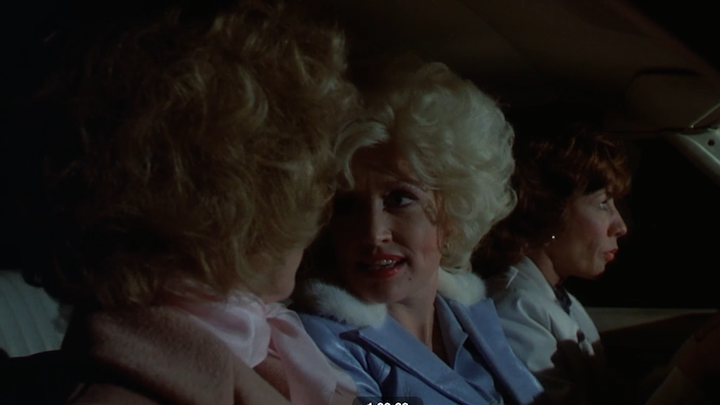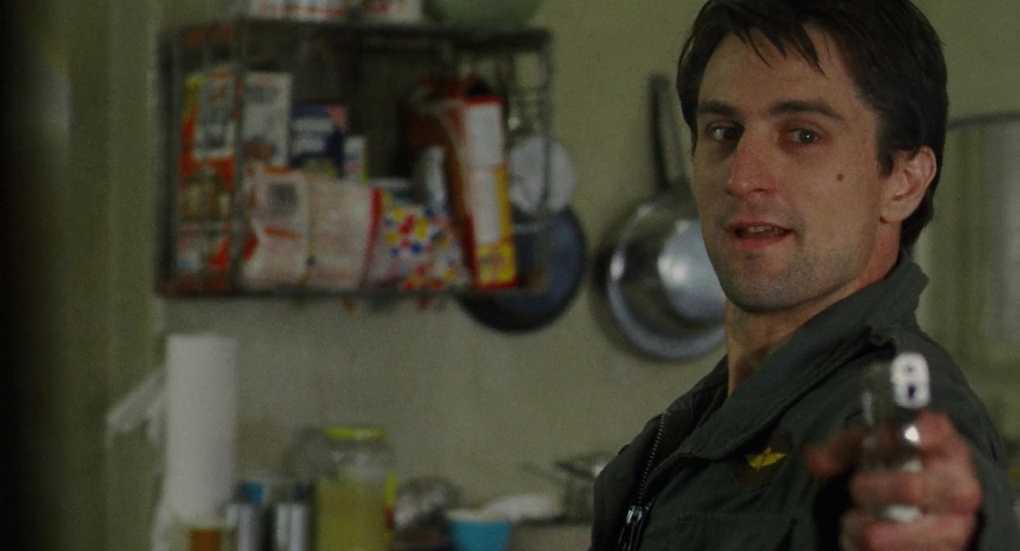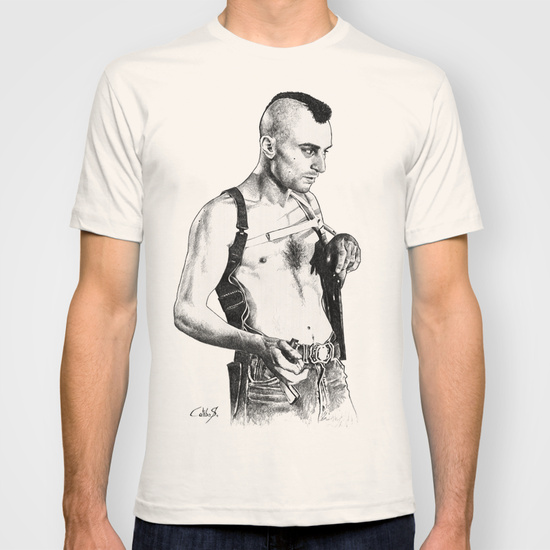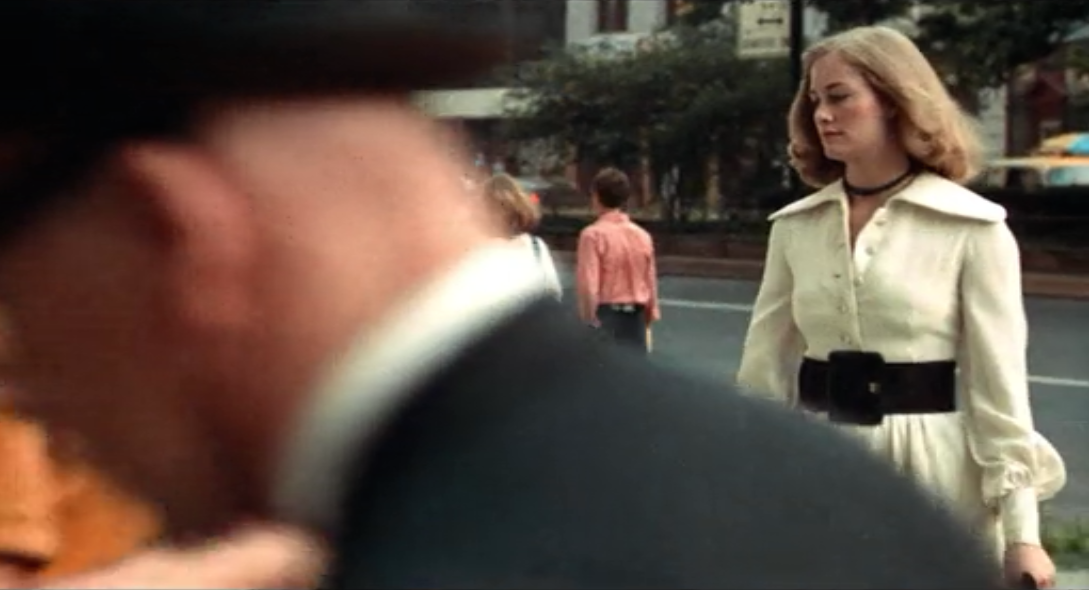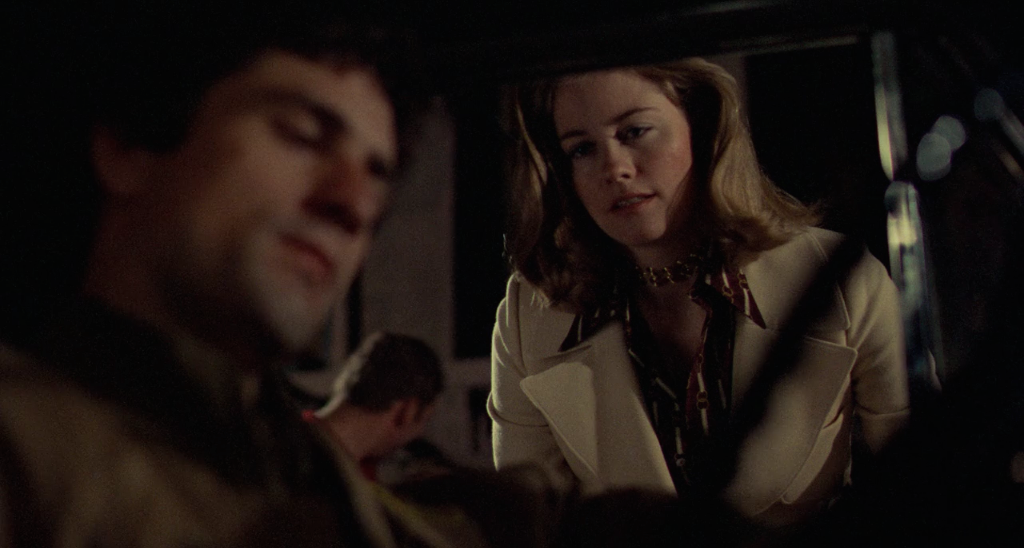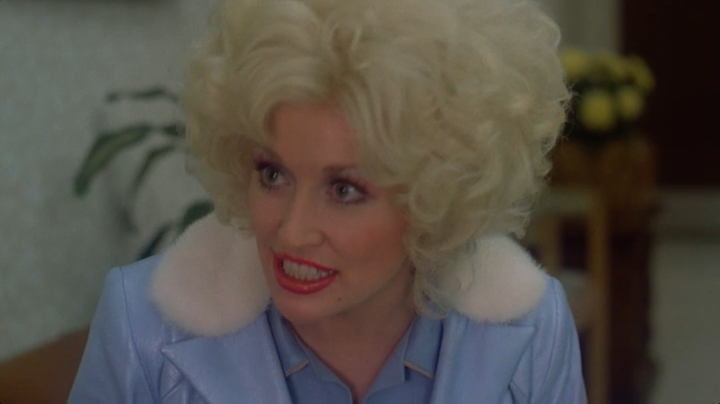 Nathaniel claims to have selected Nine to Five (1980) for this week’s #HMWYBS because it stars Jane Fonda and Lily Tomlin, who have reunited for a new Netflix series. With all due respect to Fonda and Tomlin (neither of whom is doing her best work in this particular film), I will point out the obvious: The real and abiding reason to revisit the movie is that it also stars Dolly Parton as the tormented secretary Doralee Rhodes, in one of the greatest comedy performances by a country singer making her film debut of all time. (Don’t act like it isn’t.)
Nathaniel claims to have selected Nine to Five (1980) for this week’s #HMWYBS because it stars Jane Fonda and Lily Tomlin, who have reunited for a new Netflix series. With all due respect to Fonda and Tomlin (neither of whom is doing her best work in this particular film), I will point out the obvious: The real and abiding reason to revisit the movie is that it also stars Dolly Parton as the tormented secretary Doralee Rhodes, in one of the greatest comedy performances by a country singer making her film debut of all time. (Don’t act like it isn’t.)
Runners-Up
Nine to Five is one of a few films that I watched over and over again as a child (the others include Mary Poppins and The Many Adventures of Winnie the Pooh), and I honestly couldn’t tell you how many times I have seen it. A hundred? A thousand? Seriously, it is like counting the number of times I have eaten macaroni and cheese.
I knew when it came time to select a “best shot” that I would do the Internet the service of selecting something featuring Dolly Parton. The only real question I have had to ask myself is… which one?
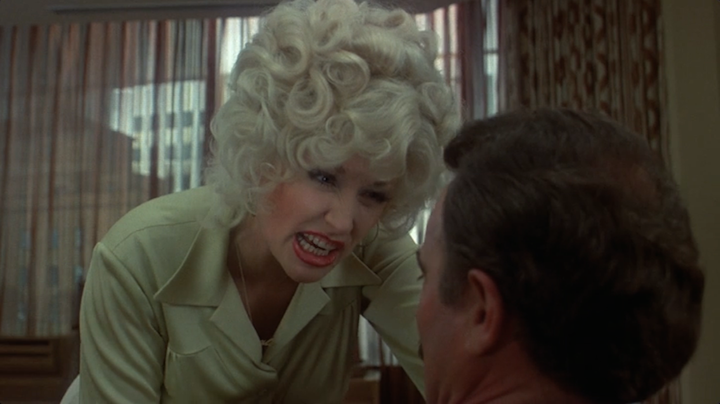 Is it when she threatens to turn Mr. Hart from a rooster into a hen in one shot? (Don’t think she won’t!)
Is it when she threatens to turn Mr. Hart from a rooster into a hen in one shot? (Don’t think she won’t!)
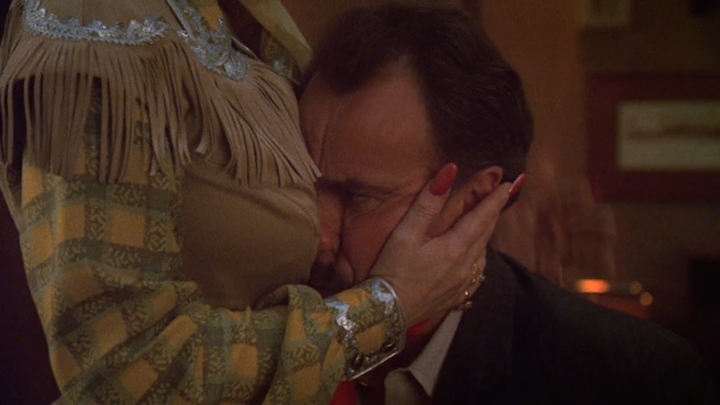 When she turns the tables on Mr. Hart in one of the movie’s better executed boob jokes?
When she turns the tables on Mr. Hart in one of the movie’s better executed boob jokes?
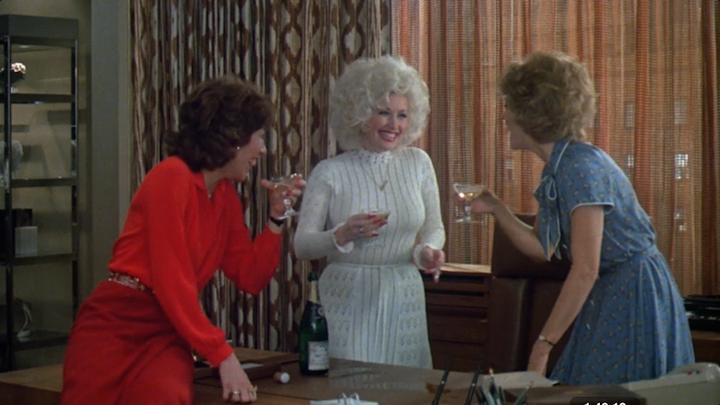 Or when she toasts Fonda and Tomlin in the movie’s memorable final scene?
Or when she toasts Fonda and Tomlin in the movie’s memorable final scene?
My Best Shot
Finally, I settled on a shot from the scene when our heroines flee the hospital with what they think is Mr. Hart’s dead body in the trunk of Violet’s car. People tend to remember these three characters as best friends, but scenes like this one remind us that their friendship is actually young and not invulnerable to the kinds of disagreeing and finger-pointing that plague us all. Whose fault is it that Mr. Hart is dead? What will they do with the body?
The shot arranges the characters from the least to the most implicated in the murder, which also means the least to the most fed up with their job. Judy and Doralee face each other, debating how they might rationalize their involvement in Mr. Hart’s death, while Violet stares forward with her steely resolve to dispose of the body. The street lights illuminating their faces and shoulders evoke a kind of noir aesthetic that conveys the characters’ anxieties while also allowing the director, Colin Higgins, to gently play on the conventions of the thriller.
One thing I admire about Nine to Five is that it gives each of its leads a roughly equal chance to shine. Double Oscar winner Fonda organized the movie, but she takes the least memorable role, virtually daring Tomlin and Parton to steal the film out from under her. (Parton succeeds.) The three actresses share a number of shots, but this one does a particularly good job of letting them act beside, rather than on top of, one another. In this respect, I think it offers some helpful insight into what makes the overall film work as well as it does. Imagine folding this image into thirds. Fonda’s naive housewife, Parton’s lasso-throwing secretary, and Tomlin’s hard-working widow would each get their own section. They are all doing their own thing, existing at times in their own movies, but at Nine to Five‘s brightest moments they come harmoniously together, their characters distinct and all in clear focus.
But still, it is Dolly sitting squarely in the middle of the frame.
